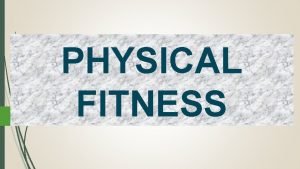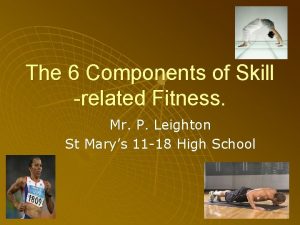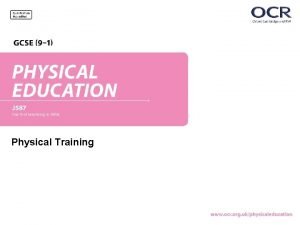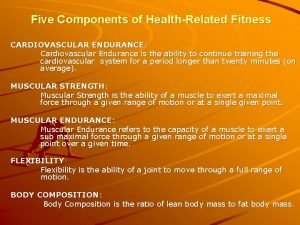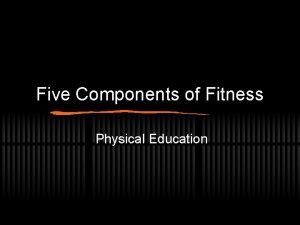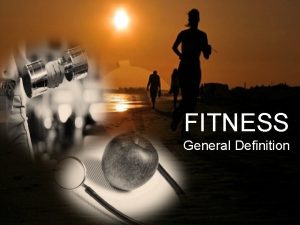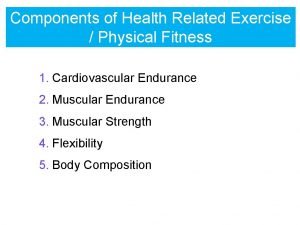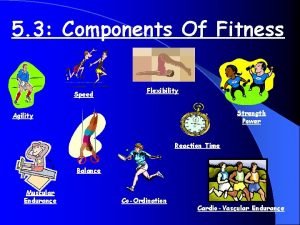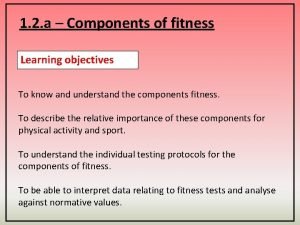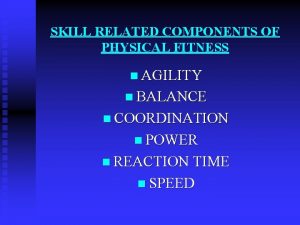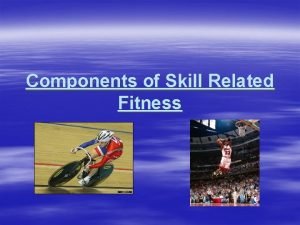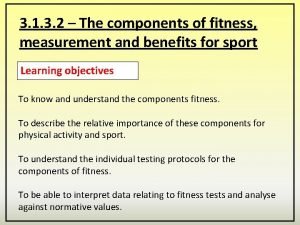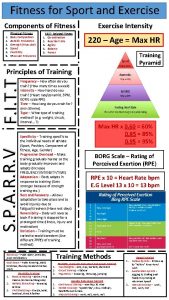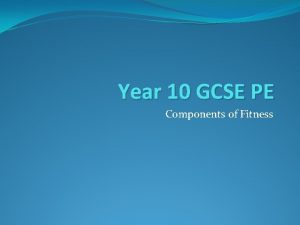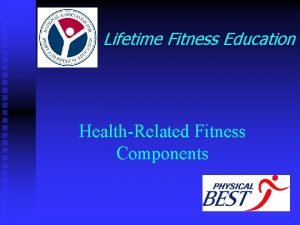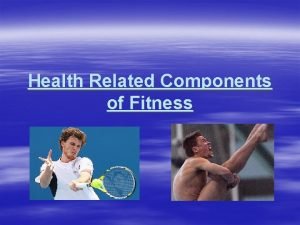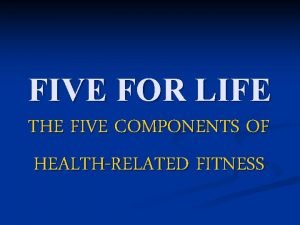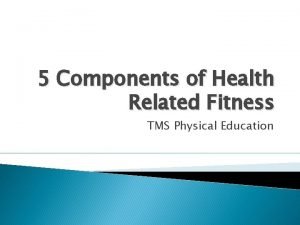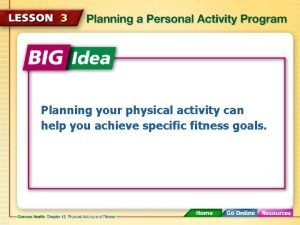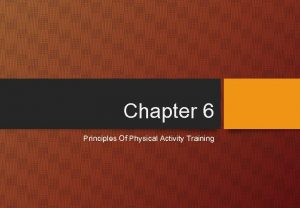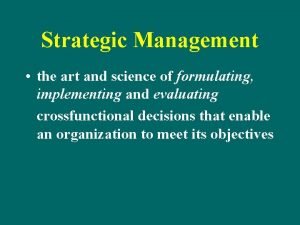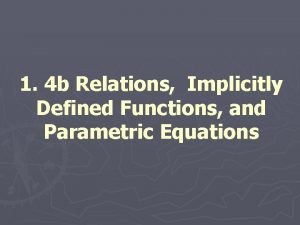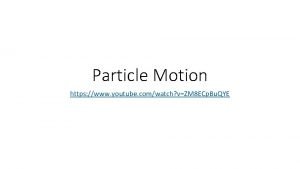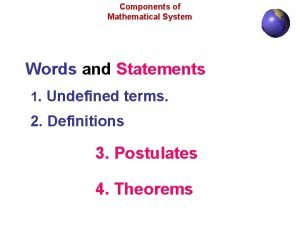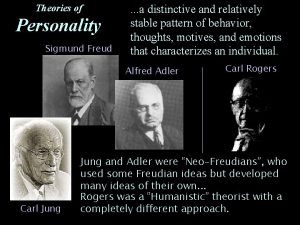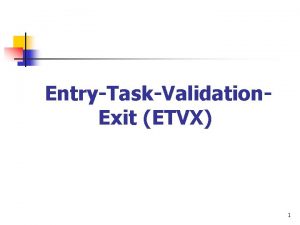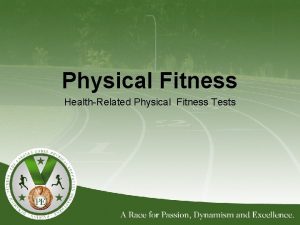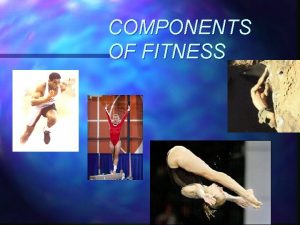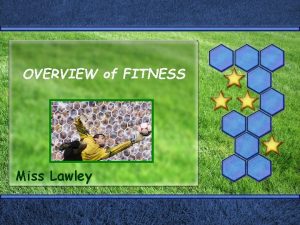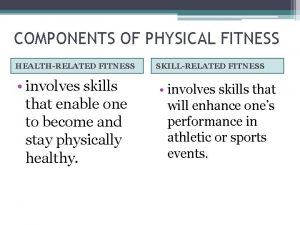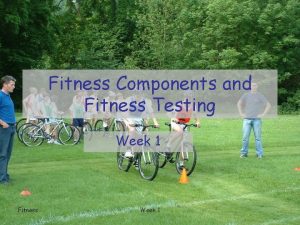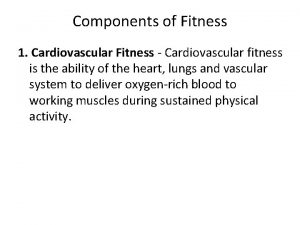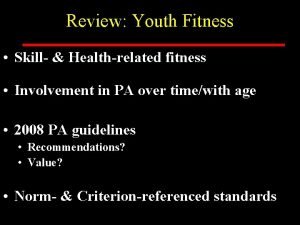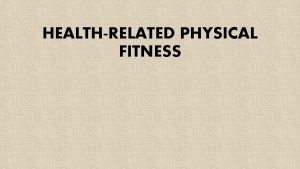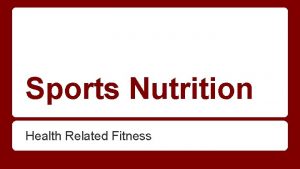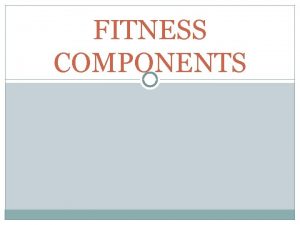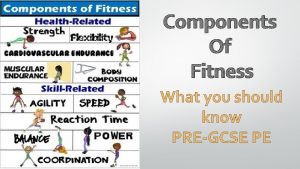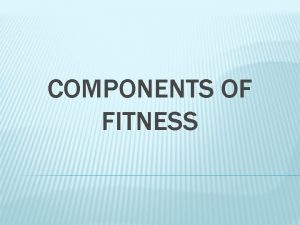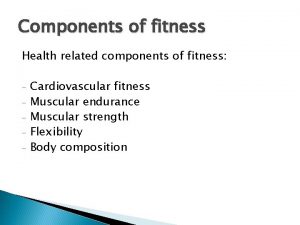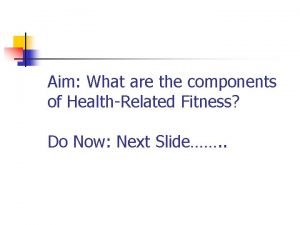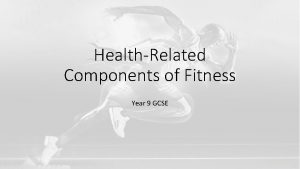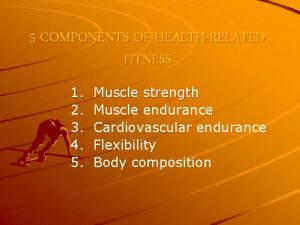HealthRelated Fitness Components And Principles Fitness Defined n





































- Slides: 37

Health-Related Fitness Components And Principles

Fitness Defined n (Health-Related) Physical Fitness u Measure of a person’s ability to perform physical activities requiring: t Endurance t Strength t Flexibility

Reduces Risk of Heart Disease Stronger Bones & Muscles re o M y g r e En R H R er w o L BENEFITS OF FITNESS Lo we r. B loo d. P res sur e t r a e H n he t g n e r t S Helps Maintain Healthy Body Weight Reduces Stress

Physical Fitness Includes n Skill-Related Fitness n Health-Related Fitness With a partner identify 3 skill related fitness components and 2 health-related fitness components

Skill-Related Fitness Components Agility n Balance n Coordination n Power n Reaction time n Speed n

Health-Related Fitness Components n Cardiovascular Endurance n Muscular Strength and Endurance n Flexibility n Body Composition

Health-Related Fitness Components n Cardiovascular Endurance a general term that refers to the overall efficiency of the heart, lungs, blood vessels, and exercising muscles. It refers to one’s ability to sustain prolonged physical effort. What are some examples of aerobic activities?

Health-Related Fitness Components n n Muscular Strength-refers to the maximum force a muscle can exert in a single contraction. Muscular Endurance-refers to the muscle’s ability to perform repeatedly without fatigue.

Health-Related Fitness Components n Flexibility-refers to the ability of joints to bend through their full range of movement (ROM)

Health-Related Fitness Components n Body Composition- refers to the relative distribution of fat throughout the body in relation to bone, muscle and other tissue.

Principles of Fitness Frequency n Intensity n Time n Type n A well-known method that can help you design a fitness training program.

Frequency n Frequency is how often you exercise. After any exercise is performed, your body needs rest time to rebuild and repair itself. You must keep this in mind when deciding how frequently you will perform each different exercise.

Intensity n Intensity is the amount of effort or work that it takes to do the workout. The intensity relates to the level of exertion scale: Level 1 is the least intensity and Level 5 is the most intensity. You should exercise at a variety of different intensities.

Intensity Scales

Time n Time is how long each individual exercise session should last. Time will vary based on the intensity and type of exercise.

Type n Type is the kind of exercise you will be doing; e. g. , exercises that focus on cardiovascular endurance such as jogging or skipping, exercises that focus on flexibility such as yoga or gymnastics, or exercises that focus on strength training such as push ups or sit ups. You should combine a variety of activities in your routine based on your goals.

FITT Plan Components of Fitness Cardiovascular Endurance Muscular Strength & Endurance Flexibility Frequency 4 -7 x per week 2 -4 x per week Intensity Moderate to Maximum (RPE) 2 -3 sets of 10 -15 reps Stretch to feel tension (no pain) Time 20 + minutes As long as it takes Hold each stretch for 30 -60 seconds Type Eg. Jogging Eg. Chest press Eg. Forward Bend

Principles of Fitness n Overload n Progression n Specificity n Reversibility

Overload Principle States that a body system must perform at a level beyond normal in order to adapt and improve physiological function and fitness.

The Progression Principle A gradual increase in the level of exercise that is manipulated by increasing wither frequency, intensity, or time, or a combination of all three components.

The Specificity Principle That maximum training effect comes when you mimic the effort required in the actual sport as closely as possible. In general, you improve by practising a specific activity repeatedly.

The Reversibility Principle If you stop training for a while (a process called “detraining” you will start to lose, or reverse the gains you have made. Some strength gains may start to decrease in as little as three days.

Frequency Children (5 -12 years) Adolescents (11+ years) Middle and high school youth who participate in athletics n. Developmentally n 5 or 6 days per week n. Daily or nearly every appropriate physical day activity on all or most n. Three or more sessions days of the week per week n. Several bouts of physical activity lasting 15 min or more daily

Intensity Children (5 -12 years) Adolescents (11+ years) Middle and high school youth who participate in athletics n. Mixture of moderate and n. Moderate to n 60 -90% heart rate vigorous intermittent activity vigorous activity. n 12 -16 rating of perceived exertion (RPE)d max (MHR) or 50 -85% heart rate reserve (HRR) n 12 -16 rating of perceived exertion (RPE)

Time Children (5 -12 years) Adolescents (11+ years) Middle and high school youth who participate in athletics n. Accumulation of at n 20 -60 min n 30 -60 min daily least 60 min, and up to activity several hr, of activity n 20 min or more in a n. Up to 50% of single session accumulated min should be accumulated in bouts of 15 min or more

Type Children (5 -12 years) Adolescents (11+ years) n. Variety of activities n. Play games, sports work, n. Activities that use large transportation, recreation, selected from the first physical education, or 3 levels of the activity planned exercise and community activities pyramid n. Brisk walking, jogging, n. Continuous activity stair climbing, basketball, should not be racket sports, soccer, expected for most dance, lap swimming, children skating, lawn mowing, and cycling n. Activities should be Middle and high school youth who participate in athletics muscles in a rhythmical fashion (e. g. , brisk walking, jogging, stair climbing, basketball, racket sports, soccer, dance, lap swimming, skating, and cycling)

Muscular Fitness In the Physical Best program, muscular fitness refers to the development of a combination of muscular strength and muscular endurance

Frequency 9 -11 years 12 -14 years 15 -16 years 17+years 2 or 3 days/wk

Intensity 9 -11 years 12 -14 years 15 -16 years 17+years Very light weight Light weight Moderate weight Light to heavy weight (based on type selected)

Time 9 -11 years 12 -14 years 15 -16 years 17+years At least 1 set (may do 2 sets), 6 -15 reps, at least 20 -30 min At least 1 set (may do 3 to 4 sets), 6 -15 reps, at least 20 -30 min Minimum 1 set, 8 -12 reps

Type 9 -11 years 12 -14 years 15 -16 years 17+years Major muscle groups, 1 exercise/ muscle or muscle group Major muscle groups, 2 exercises/ muscle or muscle group Major muscle groups, 8 -10 exercises; select strength, power or endurance

Flexibility The ability to move a joint through its complete ROM, or range of motion

FITT Frequency Intensity Time Type Three times per week, preferably daily and after a warm-up to raise muscle temperature. Slow elongation of the muscle to the point of mild discomfort and back off slightly. Up to 4 -5 stretches per muscle or muscle group. Hold each stretch 10 -30 sec. Always warm up prior to stretching. The preferred stretch for the classroom is slow static stretching for all muscles or muscle groups.

Body Composition Definition Health benefits Used in teaching all components. Growth and development Nutrition Metabolism

Aerobic Fitness The ability to perform large muscle, dynamic, moderate- to high-intensity exercise for prolonged periods

Physical Best Activity Guides

Format For Activities Top of Page: Activity Name, Level and Concept(s) 1. 2. 3. 4. Purpose National Standards Equipment Needed Reproducible 5. 6. 7. 8. Procedure Teaching Hints Inclusion Tip Assessment
 What is a collection of well-defined objects
What is a collection of well-defined objects It is the ability to do strength work at an explosive pace.
It is the ability to do strength work at an explosive pace. Health related fitness and skill related fitness
Health related fitness and skill related fitness Web usability definition
Web usability definition What is physical fitness in mapeh
What is physical fitness in mapeh Physical fitness grade 9
Physical fitness grade 9 What are 6 components of skill related fitness
What are 6 components of skill related fitness Components of fitness
Components of fitness Fitness components
Fitness components Fitness components
Fitness components Five components of fitness
Five components of fitness Components of fitness definition
Components of fitness definition Health related components definition
Health related components definition Components of fitness
Components of fitness Hexagon agility test example score
Hexagon agility test example score Speed strength agility flexibility
Speed strength agility flexibility Stick drop test fitness component
Stick drop test fitness component What is agility in physical education
What is agility in physical education Physical fitness components
Physical fitness components Balance skill related fitness
Balance skill related fitness Physical fitness is of two types
Physical fitness is of two types Ruler drop test physical fitness components
Ruler drop test physical fitness components Components of fitness btec sport
Components of fitness btec sport Ruler drop test component of fitness
Ruler drop test component of fitness 5 components of fitness quiz
5 components of fitness quiz Lesson 3 components of fitness
Lesson 3 components of fitness The ability to maintain the body in proper equilibrium
The ability to maintain the body in proper equilibrium Components of health related fitness
Components of health related fitness Five components of health related fitness
Five components of health related fitness 6 components of health related fitness
6 components of health related fitness An exercise session has three stages
An exercise session has three stages 6 principles of fitness
6 principles of fitness What can be defined as the art and science of formulating
What can be defined as the art and science of formulating Implicitly defined
Implicitly defined Youtube https //www.youtube.com/watch v=vnp84pn0mjq
Youtube https //www.youtube.com/watch v=vnp84pn0mjq Component of a mathematical system
Component of a mathematical system Is defined as a distinctive and relatively stable pattern
Is defined as a distinctive and relatively stable pattern Etvx
Etvx

